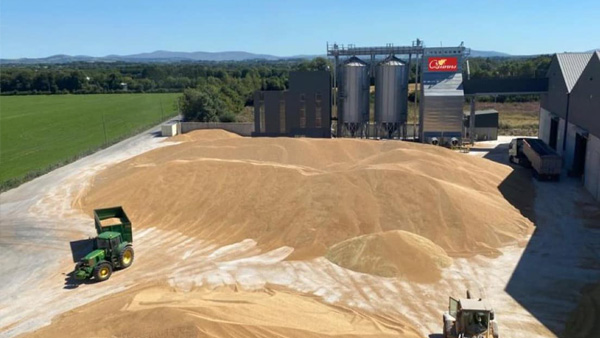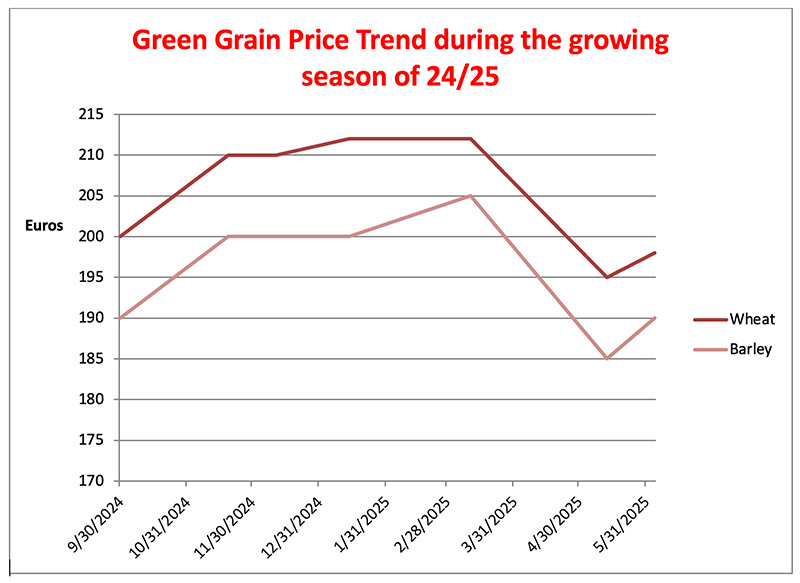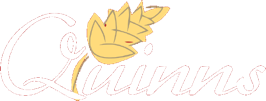Tillage Review 2025

As the 2025 harvest draws to a close, Quinns are proud to share a review of the season and outline opportunities for the tillage sector as we look to 2026 and beyond. The tillage sector is at the heart of Irish agriculture — not only providing essential feed and food grains, but also contributing to sustainability through practices such as cover cropping, minimum tilling and integrated pest management. These practices improve yields, protect soil health, and support biodiversity.
The 2025 harvest has been a success, with strong yields across most crops compared with 2024. Farmers benefited from favourable weather, with harvesting completed in excellent conditions in July and August. Many growers were also able to establish cover crops and winter oilseed rape promptly afterwards. Grain quality is excellent this year with very good bushels and moistures recorded.

Challenges in the grain market
While yields have been encouraging, farmers continue to face challenges with suppressed grain prices and ongoing market volatility. Global supply and demand, climate factors, and policy shifts remain unpredictable. At Quinns, we are committed to supporting farmers in managing these risks and achieving greater financial stability.
Forward selling – An option worth looking at
One of the most effective tools for risk management is forward selling grain. By locking in prices early, farmers can average their returns, capture premiums during peak demand, and reduce exposure to sudden price drops.
Quinns are leading the way in offering competitive forward prices. In spring 2025, we offered €212 per tonne for wheat and €200 per tonne for barley (based on 20% moisture). This gave our growers an opportunity to secure strong prices well before harvest — a strategy that will remain central to our support for farmers in the years ahead. The chart below highlights the green grain prices throughout the growing season of 24/25.
Why supporting Irish grain matters
The benefits of using Irish grain go far beyond farm incomes. By reducing reliance on imports, we strengthen food security and reduce the carbon footprint of animal feed. A Quinns study comparing Irish-based and imported dairy feed formulations showed that imports generated over 800kg more CO₂ per tonne than the Irish equivalent.
Despite this, Ireland imports around 5 million tonnes of feed annually, while some of our own quality grains are exported. This is an area where Quinns are determined to make a difference.
Oats – championing native grains
At Quinns, we recognise the excellent feeding quality of native oats and are actively incorporating them into our feed mixes. Oats are highly nutritious, with a high oil content, ruminant animals perform very well when fed oats as part of their diet. So why do we need to export this quality cereal when the country continues to import substandard substitutes such as palm kernel, wheat feed, and sunflower meal.

Quinns are committed to supporting Irish-grown oats and other native grains in our feed formulations. We encourage other mills to follow our lead — because when we back Irish grains, everyone benefits: farmers, livestock, and the environment.
Policy and support for the future
For the tillage sector to thrive, stronger government backing is essential. Ireland is and will always be net importers of animal feed ingredients but we must protect the tillage industry that we have as it creates security and a good foundation for all our finished feed requirements whether for mona-gastric or ruminant animals including straw. The tillage industry also plays a pivotal role in using animal manures from our livestock industry, this is a symbiotic relationship and the tillage farmers is a very much required partner in this relationship. Current market prices will not sustain the industry, let alone allow it to grow. Quinns fully support the IFA’s call for increased tillage funding, including a budget of at least €250/ha, alongside a mandated minimum inclusion of native grains and pulses in Irish-milled feeds.
Such measures would provide immediate demand for Irish crops, strengthen farm incomes, and reduce reliance on imported feed.
Failure to support the tillage industry will result in the continuing mass exodus from the sector.
Looking ahead to 2026 and beyond
The tillage sector is uniquely placed to support both economic and environmental goals in Irish agriculture. With strong forward-selling strategies, greater use of native grains such as oats, and the right government supports, we can build a sustainable and resilient future for tillage farming.
At Quinns, we are proud to lead by example. By backing Irish farmers, championing local grain, and promoting sustainable practices, we are ensuring that Irish agriculture can thrive in 2026 and beyond. Together, we can build a stronger, more sustainable future for farmers, consumers, and the environment.

